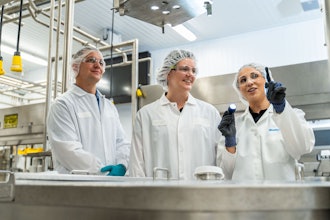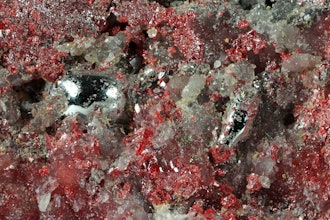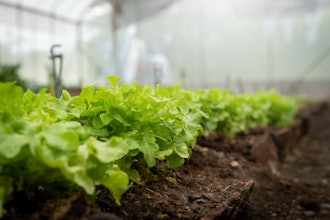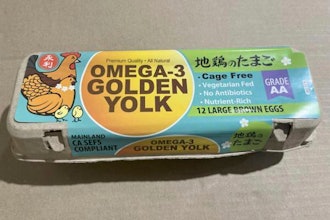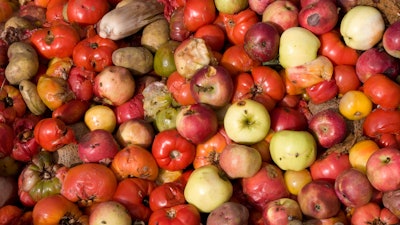
With so many types of flies in existence, it is crucial for food processors to understand the differences between fly species so they can quickly and effectively solve any potential issues. A perennial pest, flies comprise one of the largest and most diverse orders of insects. Knowing what to look for can help managers address problems with maximum effectiveness.
Fly size is a key factor in determining an appropriate response from a pest management perspective. Large flies usually enter food plants as incidental invaders, and small flies more commonly develop inside the plant, indicating a larger sanitation issue. Flies can easily carry pathogens from one surface to another, making their bodies a potential contaminant source. Small fly issues that have escalated to problem status are more common in the industry than large fly issues. Getting to the source of small fly issues and correcting the problem is often a challenge to sanitation and facility operations, so quickly identifying the fly at hand can point to the specifics of its habitat and its source.
From small to large, below are the types of flies you could be dealing with, as well as what your pest professional is looking for to keep your facility rid of flies and audit-ready.
Small Flies
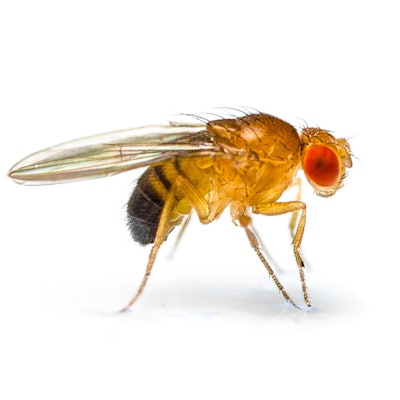 Fruit flyiStock
Fruit flyiStock
The most familiar fruit fly in these conditions is a small tan- or gray-bodied fly with red eyes: Drosophila melanogaster. Another important type of fly, D. replete, is slightly larger than the others and has dark eyes instead of red ones. These dark-eyed types are associated with more advanced decomposition of organic materials in cracks, crevices, drains, etc.
Phorid Flies: Phorid flies have a distinctive humped back and small head. They infest food wastes, sewage, dead animals and other damp organic materials. Phorid flies can infest resources deep underground, such as cracks and crevices where dirty water or mops continually feed organic material. There they quickly multiply in the contaminated soil surrounding broken burried drain lines. These broken drain lines under the floors of food plants are surprisingly common, and when they cause a phorid fly problem, the only solution is to jackhammer the floor to properly repair the drain and remove and replace any contaminated soil. Additionally, be sure to replace any water and wash all mops that are continually used, as these can push debris into cracks and crevices, creating a prime habitat for phorid flies.
 Drain fly, also known as Drain MothiStock
Drain fly, also known as Drain MothiStock
Small Dung Flies: Also a friend of dirty drains, the small dung fly — or Sphaerocerid fly — looks similar to a miniature house fly. Like the others, they are associated with moist, decaying organic materials and often found in areas such as drains or floor cracks into which organic material may have been mopped.
Large Flies
Unlike small flies, large flies are usually incidental invaders in a facility. Different types of large flies indicate different root problems, so identifying them properly is critical in solving the problem.
Blow flies tend to be associated with garbage and food waste, while house flies are more often associated with manure and other damp organic materials. Cluster flies, found in the upper Midwest and Northeast, are larger and hairier than a house fly or blow fly, and are not necessarily attracted to foods or filth, but gain entry through roof fixtures or other cracks and crevices.
Large flies can find their way inside throughout winter and spring, sometimes in large numbers, and are also strongly attracted to sunny windows and light traps. If these flies are regularly found indoors during colder months, it is possible they are developing on rotting food sources that need to be identified and properly cleaned.
Taking Action
Once you’ve narrowed down which fly species you’re dealing with, you can work towards a resolution for the issue. When it comes to preventing flies, small or large, the solution comes down to proper sanitation. Scheduled cleanings should occur for food processing companies roughly once a week to properly disrupt the developmental cycles for the top chronic pest species. For certain processing and packaging equipment, as well as drains, periodic physical cleaning is recommended. Chemical and probiotic cleaners can also be useful for some types of equipment, cracks, crevices and drains.
 Heath
Heath
Jerry Heath is a Board Certified Entomologist (BCE) with broad expertise in pesticide technology, pest management in food processing, stored products and production agriculture. A Product Manager and Staff Entomologist for IFC, Heath serves a broad range of technical service needs for IFC’s food industry clients. Heath holds B.S. and M.S. degrees in Entomology from Washington State and The University of Nebraska, respectively. With nearly 40 years of experience, Heath’s career has focused exclusively in the fields of entomology and pest management in academic and several industrial settings.











